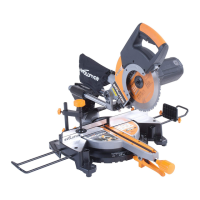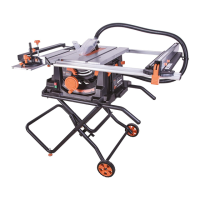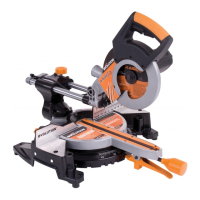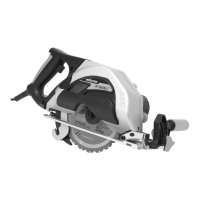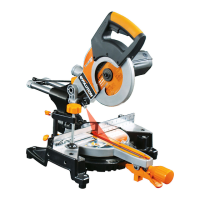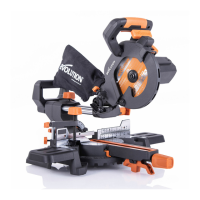17
www.evolutionpowertools.com
EN
DE
FR
Note: Only dedicated plunge cutting blades must be used
when attempting a plunge cut.
Note: To reduce the risk of blade kickback when plunge cutting.
It is recommended to drill a pilot hole and plunge cut into the
hole as a starting point, giving you extra control and stability.
To plunge cut:
• Completeany/allmarkingoutofthecuttinglinesusing
a pencil, marker pen, etc, on the workpiece before
commencing operations.
• Holdthemachineatanangletotheworkpiecewiththe
bottom edge of the workpiece contact plate resting rmly
against the workpiece. (Fig. 7).
Note: The blade must not be in contact with the workpiece at this
stage. The operator must also be satised that the blade will not
contact the workpiece immediately the machine is switched on.
• Setstrokeratetoitsmaximumsetting.
• Switchthemachineon.
• Veryslowlyrotatethemachineusingthebottomedgeof
the workpiece contact plate as a fulcrum. Allow the blade
to very gradually ingress into the workpiece.
• Whenthecontactplateislyingatagainsttheworkpiece
continue cutting as normal.
• Adjustthestrokerateforoptimumcuttingperformance.
FLUSH CUTTING
Flushcuttingiscuttingveryclosetoasurfacesuchasaoor,
wall or ceiling etc. This technique allows the operator to cut
o unwanted protruding material such as redundant joists,
brackets pipes, etc, from a building.
WARNING: The operator should ensure that any redundant
architectural objects etc, are not ‘live’ and it is safe to cut
through them.
Note: Flushcuttingisonlypossiblewhenusinghighlyexible
bi-metal blades.
To ush cut:
• Selectandinsertthecorrectsawbladeintothemachine.
• Positionthesideofsawbladedirectlyagainsttheoor,wall,etc.
• Asideedgeoftheworkpiececontactplateshouldbein
contactwiththeoor,wall,etc.
Fig. 7

